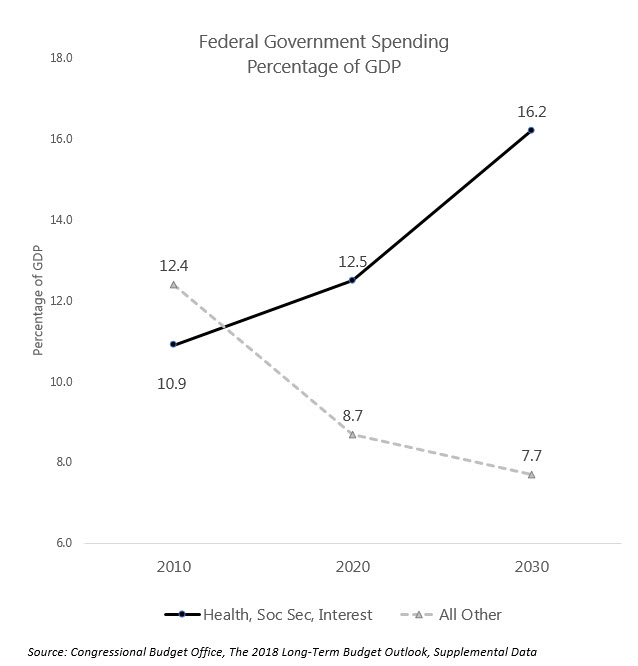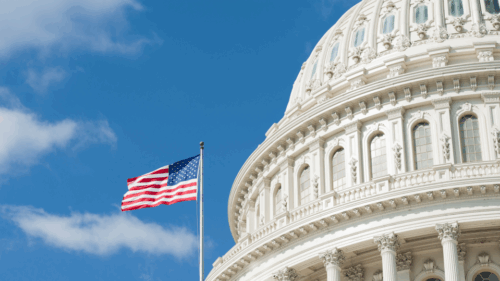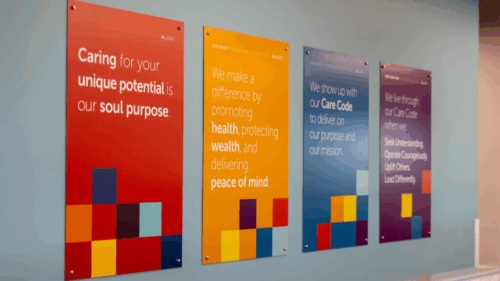There was a landslide in the 2018 mid-term elections. No, I’m not talking about a blue wave or the Red Sea. Healthcare was named as the most important issue to voters in exit polls and received almost twice as many votes as immigration and the economy, which finished second and third. Speaker of the House Nancy Pelosi awkwardly proclaimed, “Let’s hear it for more preexisting medical conditions” in a campaign night victory speech. In spite of President Donald Trump’s attempts to make the election about jobs, the economy, or immigration, healthcare was the story of the 2018 election, and this was simply a drizzle compared to the healthcare flood that’s coming with the 2020 election.
So, why has healthcare become so political? Can’t we just get the government out of healthcare? Can’t the government just give us all free healthcare? Opinions on the government’s role in healthcare are kind of like navels…everybody has one!
Insurance Company with an Army
The bottom line is the federal government is inextricably linked to healthcare. The federal government is the No. 1 purchaser of healthcare services in the United States. Healthcare is the largest federal government expenditure. The federal government has been referred to as an insurance company with an Army. Federal and state governments fund about half of the healthcare cost and make 100 percent of the regulations under which healthcare and health insurance operate.
Analysis of federal government spending indicates this insurance company characterization just might be correct. Insurance companies provide health insurance, retirement income plans, and investment vehicles. The federal government funds these services in the form of Social Security, Medicare, Medicaid, CHIP, marketplace subsidies, and interest payments on debt. These insurance-like programs now account for the majority of federal government spending, but this hasn’t always been the case.
The nature of federal government spending has changed dramatically in recent years. As recently as 2010, all other federal government expenditures combined to top the insurance-like spending. This “all other” category includes things like defense, international diplomacy, transportation, education, national security, and healthcare research…among other things. Increasing expenditures on the insurance-like programs crowds out funding for these other important items. Every tax dollar shifted to healthcare expenses is a tax dollar that could have been redirected to other needs — think education, infrastructure, defense, or public safety. High and increasing healthcare costs threaten other important government investments.
The insurance-like spending is fueled by the aging of the American population, healthcare inflation that outpaces growth in the economy, and government-funded healthcare coverage expansions. The spending pattern is projected to continue into perpetuity. Put another way, there’s no turning back. Insurance-like entitlement programs are the primary business of the federal government.
Healthcare, Debt, and Deficit
This shift in federal government spending might not be that big of a deal if government revenues covered government expenditures. The issue of the entitlement program imbalance is not just that future liabilities outpace future assets. Unfortunately, our country is spending more money each year than it collects. This imbalance, or deficit, means that future generations will be paying for the benefit program expenses of today. In other words, a portion of the Medicare, Medicaid, CHIP, or Obamacare subsidized hospital or physician visit today will be funded by taxpayers in future years, and the gap is projected to widen based on future growth in entitlement spending.
The Congressional Budget Office (CBO) tracks the debt held by the public in both real dollars and as a percentage of Gross Domestic Product (GDP). Our current debt situation isn’t the worst it’s ever been. The combination of the Great Depression and World War II (WWII), following shortly thereafter, took our debt up to 106 percent of GDP in 1946. A strong labor market and economy gradually lowered the debt to 23 percent of GDP by 1974.
The combination of the Great Recession and the boom in entitlement spending has lifted our debt to its highest level since the end of WWII. The 2020 federal debt held by the public is projected to be 79 percent of GDP. It’s projected to surpass the WWII level in 15 years and continue an upward trajectory fueled by the entitlement imbalance. Debt spikes in our history have been connected to either wars or economic catastrophes, but the CBO future projection assumes no new wars or major recession and only includes the demographic insurance catastrophe. We’re still near the bottom of the economic “entitlement mountain.”
Why is the growing debt a problem? Rising debt as a percentage of our economy weakens the government’s ability to respond to urgent situations — whether they’re environmental (think Hurricane Katrina), economic (think the mortgage meltdown), or security (think 9/11). The debt weakens our ability as a country to respond with resiliency to crisis and shifts money from responding to today’s priorities to paying for yesterday’s unfunded expenses.
So, I have already said healthcare is the No. 1 expenditure by the federal government and that we don’t have tax revenues to cover the existing entitlement commitments. Is there more to this story? Unfortunately, yes. In spite of the mounting entitlement spending imbalance, the majority of Americans don’t get their healthcare coverage funded by the federal government. Approximately 35 percent of Americans get their health insurance through a government program. In other words, our unaffordable government healthcare system only covers 3.5 of every 10 of us. That leaves more than 200 million people, or almost 65 percent, who get their health insurance coverage through their job, directly from an insurance company, or are uninsured. Expanding government coverage to more, or all, Americans multiplies the complexity and the cost issues.
Red, Blue, and Purple
After saying all of that…what am I trying to do with all this information? Well, when it comes down to it, my intent with “The Voter’s Guide to Healthcare: A non-partisan, candid, and relevant look at politics and healthcare in America” isn’t to pretend to solve America’s healthcare cost, coverage, and complexity issues. It’s also not intended to sway readers to either the left or the right politically. If you side with the MSNBC party today, you will still lean left after reading this. Likewise, it you can’t get enough Fox News, this will do nothing to quench your conservative thirst. The healthcare issue is neither blue nor red. It’s purple! It’s an all-in combination of blue and red because it impacts each and every one of us without regard to race, religion, income, gender, or politics.
Healthcare is inextricably political because it’s about people and money. However, political doesn’t have to mean partisan. A partisan viewpoint is naturally prejudiced for or against something. Think of it like discussions of race. A sensitive issue can be racial and discussed with dignity, respect, and honesty. Racial means it has to do with race, but it’s not biased. However, an issue or viewpoint that becomes racist crosses the line of prejudice. An issue can also be political and discussed with dignity, respect, and honesty. However, an issue or viewpoint that becomes partisan crosses the line of prejudice. To adequately address the massive healthcare challenge, we must be willing to set aside our individual partisan prejudice to discuss this important political issue without undue bias.
I view healthcare as one of our most challenging social justice issues and as, far and away, the greatest economic challenge facing our country. We have an economic imbalance because our current tax structure can’t adequately cover existing expenditures, and we have a social imbalance with almost 30 million people who have no health insurance protection. My goal is to simplify and educate so you won’t be swayed, moved, or manipulated by fake news or truth-twisting campaign promises.
With that said, tune in next week where you’ll learn what I mean when I use the term “healthcare costquito.” And, if you haven’t already, I encourage you to sign up for our “Insiders’ Club” where you’ll be notified when I release new information AND receive a FREE copy of my book “The Voter’s Guide to Healthcare: A non-partisan, candid, and relevant look at politics and healthcare in America” when it’s available.









